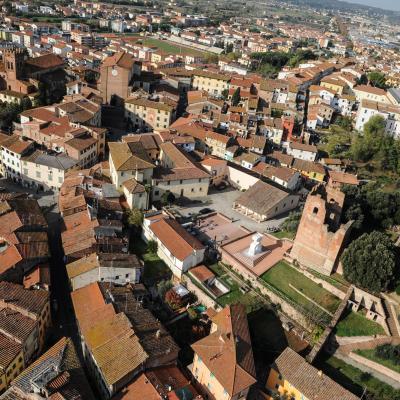If all roads lead to Rome, the Via Francigena is perhaps the most fascinating. Walked in the Middle Ages, about 1800 kilometers long - 1000 of them in Italian territory, starting from the pass of the Grand St. Bernard, for a total of 45 stops -, have been traveled by hundreds of ancient and modern pilgrims: this is how this master road is told that connects Canterbury to the eternal city.
It was approximately the year 990 AD. The story goes that the Sigeric Abby, ordained Bishop of Canterbury, by Pope John XV, who he had visited, had a diary with him, in which he was to write down and describe the 79 places he was to stop and spend the night, as he traveled back to England. The annotations of this illustrious pilgrimage are still considered the most authoritative source to reconstruct the "philological" path of the Francigena, that is, the one most faithful to historical texts and documents. As we read on the official site, in fact, it is not possible to identify the "true" track, simply because it never existed: after the fall of the Roman Empire, the great roads were no longer used and in the various territories multiplied paths and tracks, which they often varied by natural causes, new geopolitical boundaries or the presence of bandits, but which tended to gather and converge in the obligatory passages (for example for the crossing of a river) or at the villages where people stopped to eat and sleep. It was thus that some places now belonging to the City of Fucecchio became part of the Bishop of Canterbury's itinerary.
Fucecchio is part of stage 29 of the official itinerary and is the leading municipality of the Southern Centre Aggregation of the Via Francigena in Tuscany, of which it is part along with Santa Croce sull’Arno, Castelfranco di Sotto, San Miniato, Castelfiorentino, Montaione and Gambassi Terme.
To discover the historical, cultural and naturalistic initiatives planned in this section and to get information on the state of conservation and maintenance of the route visit the site www.francigenatoscanacentrosud.it, founded with the collaboration with Ecoinstitute delle Cerbaie.
For more information and download useful materials www.viefrancigene.org







